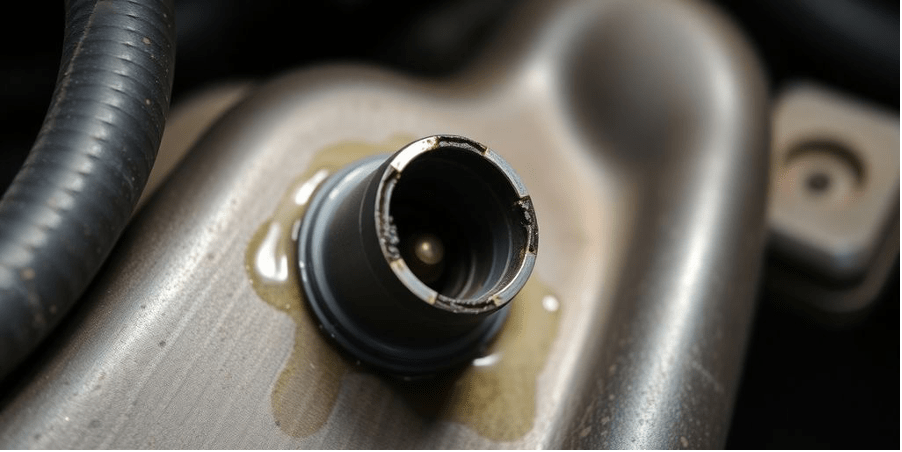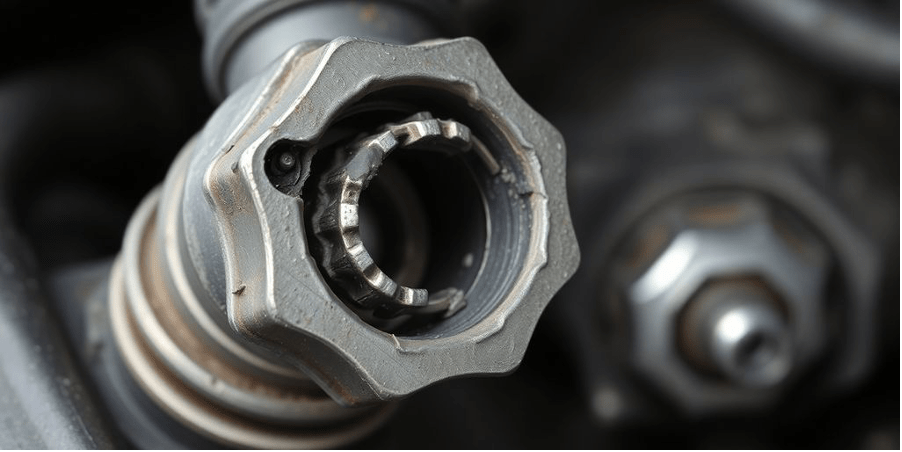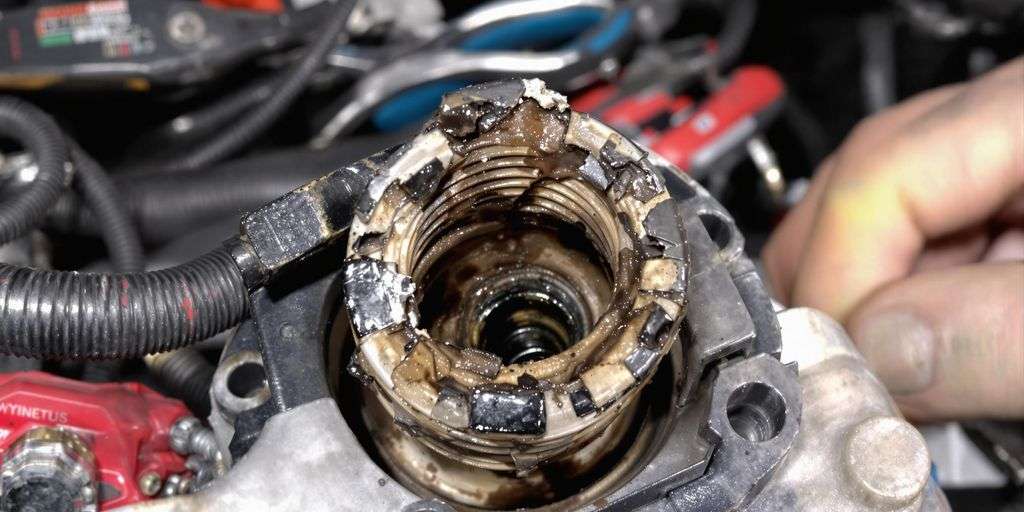Key Takeaways
- Selling a car with a damaged oil drain plug is possible but comes with risks.
- A damaged oil drain plug can lead to engine damage, affecting the car's value.
- Legal obligations may require you to disclose the damage to potential buyers.
- Repairing the oil drain plug before selling can improve your car's market value.
- Consider the costs and benefits of fixing the issue before putting your car on the market.
Understanding the Importance of the Oil Drain Plug

What is an Oil Drain Plug?
The oil drain plug is a small but vital component located at the bottom of your car's oil pan. It serves as the exit point for old oil during an oil change. Without it, draining the engine oil would be a messy and inefficient task. The plug is typically made of metal or plastic and is designed to be removed and replaced with ease, ensuring that old oil can be efficiently drained and replaced with fresh oil.
Common Issues with Oil Drain Plugs
Oil drain plugs, while simple in design, can encounter several issues:
- Stripped Threads: Over-tightening can cause the threads on the plug or oil pan to strip, making it difficult to secure the plug properly.
- Leaking Seals: The gasket or washer that seals the plug can wear out over time, leading to leaks.
- Cross-Threading: Incorrect installation can damage the threads, preventing a proper seal.
Addressing these issues promptly is crucial to avoid oil leaks and potential engine damage.
Why Oil Drain Plugs Matter
An oil drain plug might seem insignificant, but it plays a critical role in maintaining your engine's health. A secure oil drain plug prevents oil leaks, which can lead to engine damage if not addressed. Regular inspections and maintenance of the drain plug ensure that your engine remains well-lubricated and operates smoothly. Ignoring a faulty drain plug can result in costly repairs and decreased vehicle performance.
The oil drain plug is more than just a simple bolt; it's a key player in keeping your engine running smoothly. Regular checks can prevent minor issues from becoming major headaches.
Risks of Selling a Car with a Damaged Oil Drain Plug
Potential Engine Damage
Selling a car with a damaged oil drain plug can lead to serious engine problems. The plug is essential for keeping the oil inside the engine, and any damage might cause leaks. Oil leaks can result in low oil levels, leading to overheating and eventually engine failure. This could mean costly repairs for the new owner, or worse, a complete engine replacement.
Impact on Car Value
A damaged oil drain plug can significantly decrease the value of your car. Buyers often see this as a red flag, signaling potential hidden issues. Cars with mechanical problems typically sell for less, as buyers anticipate future repair costs. If you're looking to sell, expect to negotiate down from your asking price, as the damage might make your car less appealing.
Legal Implications
There are legal considerations when selling a car with known issues. Depending on your location, you might be legally required to disclose the damage to potential buyers. Failing to do so could lead to legal disputes if the buyer discovers the problem later on. It's important to be upfront about the condition of your car to avoid any potential lawsuits or claims of misrepresentation.
Selling a car with a damaged oil drain plug isn't just about getting a lower price—it's about oil loss in vehicles and the associated risks. Addressing these issues is crucial to maintaining trust and ensuring safety for everyone involved.
Solutions for a Damaged Oil Drain Plug
Repair Options
Dealing with a damaged oil drain plug can be a headache, but there are several ways to tackle the problem. First off, you might consider using a thread repair kit. These kits are pretty handy and often come with precision stainless steel wire, which is quenched and tempered for extra hardness and durability. It's a straightforward fix: you basically re-thread the hole and insert a new plug. If the damage isn't too severe, this could be a quick and effective solution.
Another option is using a rubberized drain plug. These plugs expand to fit the existing hole and can be a temporary fix if you're in a pinch. However, they aren't ideal for long-term use, so keep that in mind.
Replacement Costs
If repair options don't cut it, you might need to replace the oil pan entirely. This can be a bit pricey, ranging anywhere from $100 to $500, depending on your car's make and model. Labor costs can add another $100 to $300 to the bill. Evaluating the cost against the car's overall value is crucial before you dive into this option.
DIY vs Professional Repair
When it comes to fixing a damaged oil drain plug, you have two main paths: doing it yourself or hiring a pro. If you're handy and have the right tools, a DIY approach can save you some cash. Just be sure to follow all instructions carefully to avoid further damage.
On the other hand, opting for a professional repair ensures the job is done right. Mechanics have the expertise and tools to tackle the problem efficiently. Sure, it might cost more, but it could save you from potential headaches down the road.
Weighing the pros and cons of each repair method can help you make the best decision for your situation. Whether you go DIY or hire a pro, addressing a damaged oil drain plug sooner rather than later can save you from bigger issues.
How a Damaged Oil Drain Plug Affects Car Sales

Buyer Concerns
Selling a car with a damaged oil drain plug can raise red flags for potential buyers. They might worry about the severity of the damage and whether it indicates larger issues. Buyers are naturally cautious about oil leaks, as they can hint at neglected maintenance or potential engine problems. When a used 2021 Audi Q7 shows signs of oil stains on the splash screen, for instance, it could deter interest due to suspicions of underlying issues.
Negotiating Price
A damaged oil drain plug can significantly impact the negotiation process. Buyers will likely use this defect as leverage to lower the price. They might argue that the cost of repairs or the risk of future problems should be reflected in a reduced selling price. Sellers need to be prepared for this and decide in advance how much they're willing to negotiate.
Disclosure Requirements
Legally, sellers must disclose any known defects, including a damaged oil drain plug. Failure to do so can lead to legal repercussions or loss of trust. Being upfront about the condition of the vehicle is not only ethical but can also prevent future disputes. This transparency helps in building trust with the buyer, potentially smoothing the sales process even when defects are present.
Preventing Oil Drain Plug Damage
Regular Maintenance Tips
Staying on top of regular maintenance is key to keeping your oil drain plug in good shape. Routine oil changes are essential not just for engine health but also to ensure the drain plug is checked and tightened properly. During each oil change, inspect the plug and its washer for any signs of wear. If you notice any damage or if the washer is missing, replace them immediately.
- Schedule oil changes every 3,000 to 5,000 miles, depending on your vehicle's requirements.
- Always use the recommended type of oil and filter for your car.
- Regular oil changes and timely filter replacements can help prevent sludge buildup, which is a common cause of engine oil leaks.
Signs of Wear and Tear
Being able to spot early signs of wear and tear can save you from bigger issues down the road. Look for any oil drips under your car, which might signal a loose or damaged plug. If you notice oil residue around the plug, it's time to take action.
- Check for any visible cracks or wear on the plug.
- Listen for unusual noises while driving, as they might indicate oil issues.
- Keep an eye on your oil levels; frequent drops might suggest a leak.
Choosing the Right Tools
Using the right tools can make a world of difference when it comes to maintaining your oil drain plug. An ill-fitting wrench can strip the plug, leading to costly repairs. Invest in a good quality wrench set that fits snugly.
- Use a torque wrench to avoid over-tightening the plug.
- Ensure you have a proper oil catch pan to avoid spills and mess.
- Keep a spare washer or two handy in case the current one is worn out.
Taking the time to care for your oil drain plug can prevent leaks and extend the life of your engine. It's a small part, but its role is huge in keeping your vehicle running smoothly.
Legal and Ethical Considerations in Car Sales
Disclosure Laws
When selling a car, especially one with potential issues like a damaged oil drain plug, it's crucial to understand disclosure laws. These laws vary by state but generally require sellers to inform buyers of any known defects. Failing to disclose such information can lead to legal consequences, including lawsuits or financial penalties. Always be upfront about the car's condition to avoid any legal troubles.
Buyer’s Rights
Buyers have the right to receive accurate information about the car they are purchasing. This includes being informed about any past damages or repairs. If a buyer discovers undisclosed issues after the sale, they may have the right to return the car or seek compensation. It's important for sellers to respect these rights to maintain trust and avoid disputes.
Seller’s Responsibilities
As a seller, you have several responsibilities. It's not just about getting the car off your hands; it's about ensuring the transaction is fair and transparent. This includes providing a fair assessment of the car's condition and being honest about any issues. By doing so, you not only comply with the law but also build a good reputation, which can be beneficial for future transactions.
Selling a car with undisclosed issues isn't just a legal risk—it's an ethical one too. Being honest and transparent is the best policy to ensure both parties walk away satisfied.
Evaluating the Cost-Benefit of Repairing Before Sale
Cost of Repairs vs. Sale Price
When you're trying to sell a car with a damaged oil drain plug, the first thing to consider is the cost of repairing it versus the potential sale price. Repairs might seem expensive upfront, but they can actually increase the car's value significantly. Imagine if the repair costs $100 and boosts the car’s value by $300; that's a smart investment. On the flip side, if the repair costs are higher than the increase in sale price, it might not be worth it.
Market Perception
How your car is perceived in the market can make a huge difference. A car with a known issue, like a damaged oil drain plug, might scare off potential buyers. They might think, “What else could be wrong with it?” Fixing this issue can make your car more appealing and easier to sell. Buyers tend to avoid cars with unresolved problems, so addressing them can give you an edge.
Long-term Implications
Think about the long-term implications of selling a car as-is. If you sell it without fixing the oil drain plug, you might get a lower price, which affects your finances. However, you also avoid the hassle and time spent on repairs. Consider if the peace of mind from a quick sale outweighs the potential extra cash from a higher sale price.
Balancing repair costs with potential sale benefits requires careful thought. Sometimes, investing in repairs can lead to a quicker sale and a better price, but it all depends on the specifics of your situation.
Conclusion
So, can you sell a car with a damaged oil drain plug? Sure, but it's not without its headaches. A busted drain plug might seem like a small issue, but it can lead to bigger problems if not dealt with. Oil leaks can mess up your engine and scare off potential buyers. If you're thinking about selling, it's probably a good idea to fix it first. Not only will it make your car more appealing, but it could also save you from a lot of hassle down the road. Plus, fixing it might not be as pricey as you think. In the end, whether you decide to sell as-is or repair it first, just make sure you're upfront about the condition. Honesty goes a long way in making a sale.
Frequently Asked Questions
Can I sell a car with a damaged oil drain plug?
Yes, you can sell a car with a damaged oil drain plug, but it's important to disclose this issue to potential buyers. Transparency is key to avoiding legal problems.
What happens if I don't fix a damaged oil drain plug?
If you don't fix a damaged oil drain plug, it can lead to oil leaks, which might cause engine damage over time. This can result in costly repairs.
How can a damaged oil drain plug affect my car's value?
A damaged oil drain plug can lower your car's value because buyers may be concerned about potential engine problems and repair costs.
Are there easy fixes for a damaged oil drain plug?
Yes, there are repair kits available that can fix a damaged oil drain plug, or you can replace the plug entirely. It's often a simple fix.
Should I repair the oil drain plug before selling my car?
Repairing the oil drain plug before selling can make your car more appealing to buyers and might help you get a better price.
What should I tell buyers about a damaged oil drain plug?
You should inform buyers about the damaged oil drain plug and any repairs you've made. Honesty helps build trust and can prevent future disputes.



